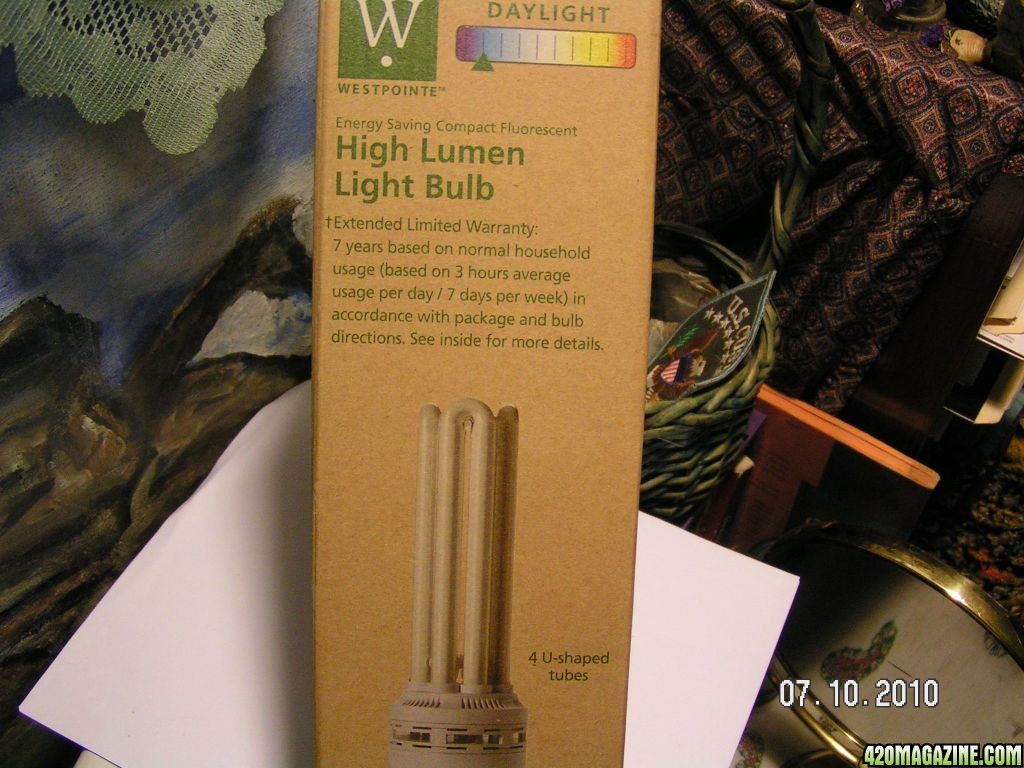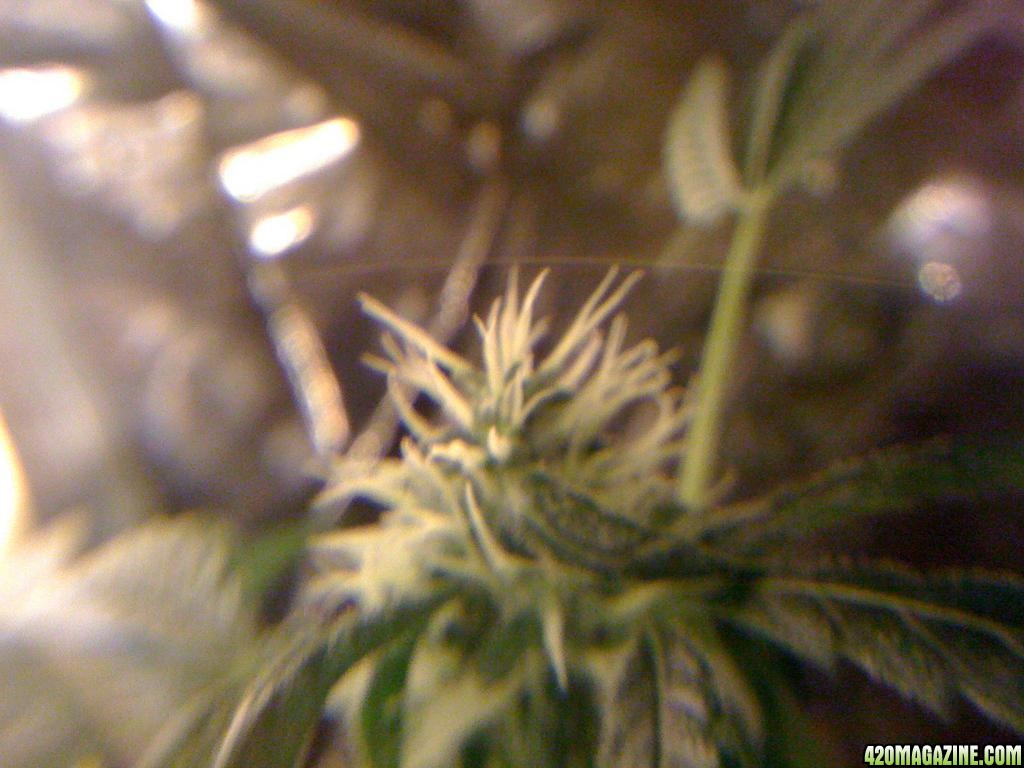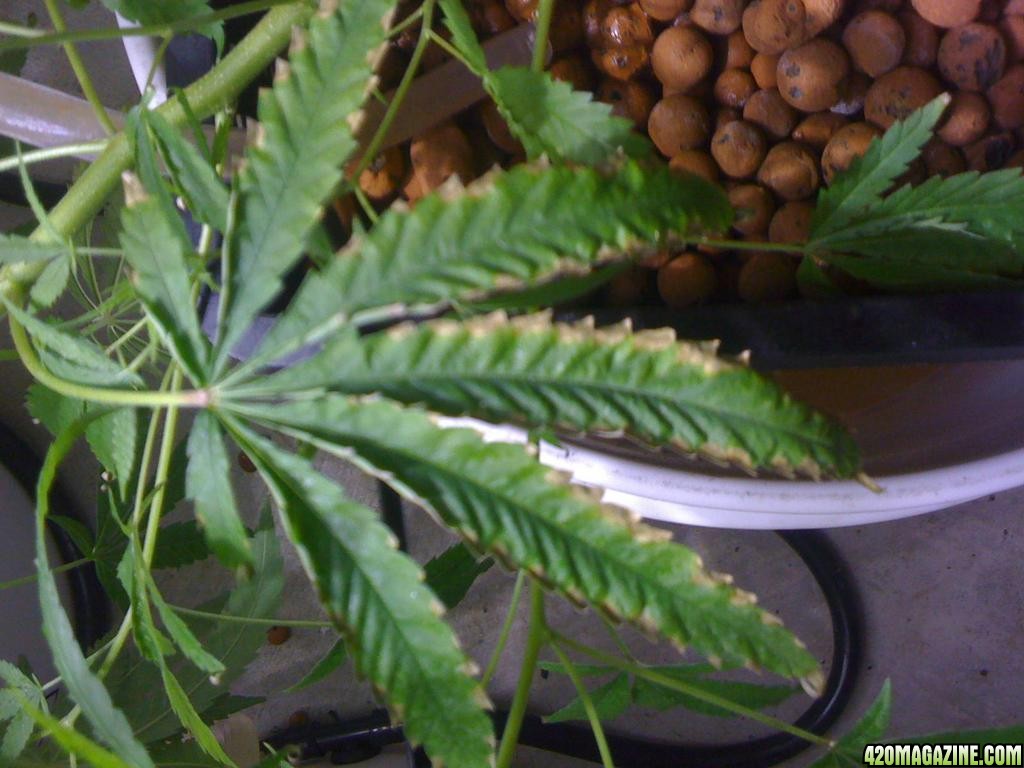Navigation
Install the app
How to install the app on iOS
How To Use Progressive Web App aka PWA On 420 Magazine Forum
Note: This feature may not be available in some browsers.
More options
You are using an out of date browser. It may not display this or other websites correctly.
You should upgrade or use an alternative browser.
You should upgrade or use an alternative browser.
The Deep Water Culture Home
- Thread starter MostlyCrazy
- Start date
-
- Tags
- stealth hydro
So all my bubble heads it looks like i have Powdery Mildew
QUOTE]
Soon as you can, baking soda increases the surface pH of the leaf making it unsuitable for the growth of powdery mildew spores. Be sure to spray the undersides of leaves as well as the upper surfaces when using any of these sprays.
Here's a recipe to make your own spray:
1 teaspoon baking soda
1 quart water
A few drops of liquid soap, like ivory
If you do not add the soap, it won't work.
and there is always NEEM Oil.
jbarrg
New Member
I've seen them with a mogul socket that cheap, but not with a regular sized socket. Lowes also has them, but its the large mogul socket.

I look every chance I get always looking for new stuff to help things along
 sorry I chopped off the bottom of the photo showing the reg. socket. I will purchase more my next trip to town
sorry I chopped off the bottom of the photo showing the reg. socket. I will purchase more my next trip to town

Doctor Who
New Member
So all my bubble heads it looks like i have Powdery Mildew
QUOTE]
Soon as you can, baking soda increases the surface pH of the leaf making it unsuitable for the growth of powdery mildew spores. Be sure to spray the undersides of leaves as well as the upper surfaces when using any of these sprays.
Here's a recipe to make your own spray:
1 teaspoon baking soda
1 quart water
A few drops of liquid soap, like ivory
If you do not add the soap, it won't work.
and there is always NEEM Oil.
A blacklight can also be used to show an comfirm mold!
Use the black light to detect mold stains, especially in areas of your house where they are most likely to occur, such as bathrooms and damp
Read more: How to Detect Stains With a Black Light | eHow.com How to Detect Stains With a Black Light | eHow.com
BootUmAll
Well-Known Member

I look every chance I get always looking for new stuff to help things alongsorry I chopped off the bottom of the photo showing the reg. socket. I will purchase more my next trip to town

What store in town?
Burple
Well-Known Member
You have to learn how to determine a TARGET ppm and then arrive at that target.
This may be a dumb question, and I don't even have a ppm meter (although I'm thinking about getting one), but with all this information on what ppm levels should be, not once have I seen anyone explain what it is a level of.
Let me try my question in english now!
I know that ppm stands for parts per million, but parts of what?
If I buy a ppm meter what should I look for and what should it measure?
I am a total noob at this and like I said, I'm just not getting the idea of parts of what we are measuring here.
I looked at a couple of meters (including the Truncheon that Roseman used in his guide), but I'm not understanding what I would be measuring.
They all have letters on them like EC/TDS and others, but what does that mean?
If someone has a link to a page that I can read up on it, I would appreciate it!


diesel farmer
New Member
Hey BH`s, Dont forget to vote for the June contests!! peace!
jbarrg
New Member
at my local true value hardware store they had 2700k bulbs also same price $12.99 plus cali taxWhat store in town?

This may be a dumb question, and I don't even have a ppm meter (although I'm thinking about getting one), but with all this information on what ppm levels should be, not once have I seen anyone explain what it is a level of.
Let me try my question in english now!
I know that ppm stands for parts per million, but parts of what?
If I buy a ppm meter what should I look for and what should it measure?
I am a total noob at this and like I said, I'm just not getting the idea of parts of what we are measuring here.
I looked at a couple of meters (including the Truncheon that Roseman used in his guide), but I'm not understanding what I would be measuring.
They all have letters on them like EC/TDS and others, but what does that mean?
If someone has a link to a page that I can read up on it, I would appreciate it!

PPm effects nutrient uptake causing nute lockout. You measure it to see how much your plant is eating. RM has a great Tutorial about feeding in Deep Water Culture and you should get the MMJ bible by Jorge Cerventes got it on pdf if u wish

TheAnswer1776
New Member
Awesome, looks like I'll be getting some liquid Karma for this grow! ANSWER could you give me some more info on your stinkbud aerocloner like what's your pump gph?? The size of the pvc in the video? Did you prime your pvc before making final connections? Sorry for all the questions, I really want to build one of these to go in my 3x3 tent. Lastly how long can you keep them in the cloner?
It has a 400 GPH pump and 1/2 inch pvc. The plans can be found here: StinkBuddies.com.
I prefer the 5 inch netcups, for there added stability.Another ignorant inquirey. This inquirey is being made to eliminate the foregoing condition. Is there any significant incentive to using 5" net pots as opposed to 3.5" net pots other than base area consumption?

Thats a very informative helpful post, Theanswer.
Thank you Roseman! I have been very impressed with the Botanicare Nutrient line and that feeding schedule. No nute burn so far and I use substantially less nutes.
+reps Bandito!
TheAnswer - I owe you reps bro! Sean Connery is my favorite Bond!
Roseman
Ah yes the absolute greatest!!!
SciFi
New Member
This may be a dumb question, and I don't even have a ppm meter (although I'm thinking about getting one), but with all this information on what ppm levels should be, not once have I seen anyone explain what it is a level of.
Let me try my question in english now!
I know that ppm stands for parts per million, but parts of what?
If I buy a ppm meter what should I look for and what should it measure?
I am a total noob at this and like I said, I'm just not getting the idea of parts of what we are measuring here.
I looked at a couple of meters (including the Truncheon that Roseman used in his guide), but I'm not understanding what I would be measuring.
They all have letters on them like EC/TDS and others, but what does that mean?
If someone has a link to a page that I can read up on it, I would appreciate it!

I got my TDS meter at Walgreens. It was a Zer0Water tester, marked down over and over, to $3. I bought two. w00t.
SciFi
New Member
Im happy I get to see all this good stuff and take notesEsp with the PPm stuff that seems confusing along with topping off. But only experience can resolve it. Plus reps RM when i can
Top up formula's are easy, if you give it some thought. I have a generic formula to plug in how much of your nutes to mix up.
This top up formula doesn't take into account for hardwater PPM increases.. or non-constant PH sources of water, as ph up/down has ppms they add.
You WILL get accumulation of hardwater that will screw up your PPM if you check them with a meter. Also, that much calcium and magnesium could potentially screw up things.... I think.
1st: Take a gallon of RO/distilled/rain water.
Check the TDS.. If 0, great!
Okay.. Add your nutes for 1 gallon.. and mix it up.
2nd: Get the PH where it needs to be.. This is better if you have a constant PH on your water else the formula deviates PPMs because of ph up and down chemicals..
3rd: Check the PPMs for 1 gallon mixed up.
Now.. the top-up equation.
((Total Gallon PPMs - Current PPMs) / Total Gallon PPMs) * X * Full Size Res in Gallons"`
X is where you need to plug in your X per gallon recipe.. With Lucas formula it's easy. X is the number of grams (I'm doing the dry recipe) in a gallon.
The number it yields for me is the number of grams to mix up in the addback water.
Hope this helps.
SciFi
New Member
Hey guys (and ladies... ) I got pics of what, I'm hoping is just a bit of nute burn, posted up, and a few new pics of the big tub girls.


Rest are in my Bubble Lab grow...
Hey Alien8/RM/Dr/Everyone who cares:
I haven't read the threads but how hot are people having issues with in their res?
I'm running at 84-86F in my high-flow buckets, and I'm not having any issues in the roots.. no slime or nothing. The roots smells like fresh cucumber and the plants are doing fine.. And I don't use any *zyme stuff, either...


Rest are in my Bubble Lab grow...
Hey Alien8/RM/Dr/Everyone who cares:
I haven't read the threads but how hot are people having issues with in their res?
I'm running at 84-86F in my high-flow buckets, and I'm not having any issues in the roots.. no slime or nothing. The roots smells like fresh cucumber and the plants are doing fine.. And I don't use any *zyme stuff, either...
- Thread starter
- #12,618
PPM is as you say parts per million. What those parts are made of is anyone's guess. What you are looking to isolate is the amount of nute ppm in the water for a chart comparison. That why you measure your water, add your nutes, measure again and do the math. The additive ppm is what it is.
grownavy1091
New Member
It has a 400 GPH pump and 1/2 inch pvc. The plans can be found here: StinkBuddies.com.
I prefer the 5 inch netcups, for there added stability.
Thank you Roseman! I have been very impressed with the Botanicare Nutrient line and that feeding schedule. No nute burn so far and I use substantially less nutes.
Ah yes the absolute greatest!!!
thanks for the link ANSWER, that really cleared up a lot. I plan on putting the cloner inside of my other tent, and when the time is right I'll try to clone for my first time, so I might be bugging you!! lmao

Top up formula's are easy, if you give it some thought. I have a generic formula to plug in how much of your nutes to mix up.
This top up formula doesn't take into account for hardwater PPM increases.. or non-constant PH sources of water, as ph up/down has ppms they add.
You WILL get accumulation of hardwater that will screw up your PPM if you check them with a meter. Also, that much calcium and magnesium could potentially screw up things.... I think.
1st: Take a gallon of RO/distilled/rain water.
Check the TDS.. If 0, great!
Okay.. Add your nutes for 1 gallon.. and mix it up.
2nd: Get the PH where it needs to be.. This is better if you have a constant PH on your water else the formula deviates PPMs because of ph up and down chemicals..
3rd: Check the PPMs for 1 gallon mixed up.
Now.. the top-up equation.
((Total Gallon PPMs - Current PPMs) / Total Gallon PPMs) * X * Full Size Res in Gallons"`
X is where you need to plug in your X per gallon recipe.. With Lucas formula it's easy. X is the number of grams (I'm doing the dry recipe) in a gallon.
The number it yields for me is the number of grams to mix up in the addback water.
Hope this helps.
Just took a note on this. I will be using AN nutes have yet to figure out what Ph, PPM and TDS meters im going to get. Anywho thanks for the advice +reps and when im crossing that bridge and have a question dont be surprised if I hit you up


Similar threads
- Replies
- 55
- Views
- 10K
- Replies
- 136
- Views
- 118K
- Replies
- 2
- Views
- 2K



